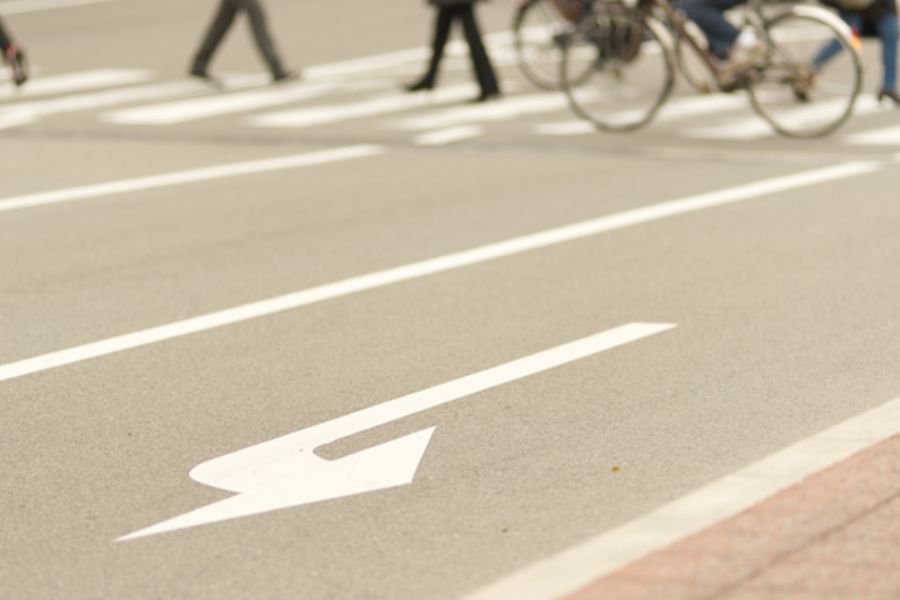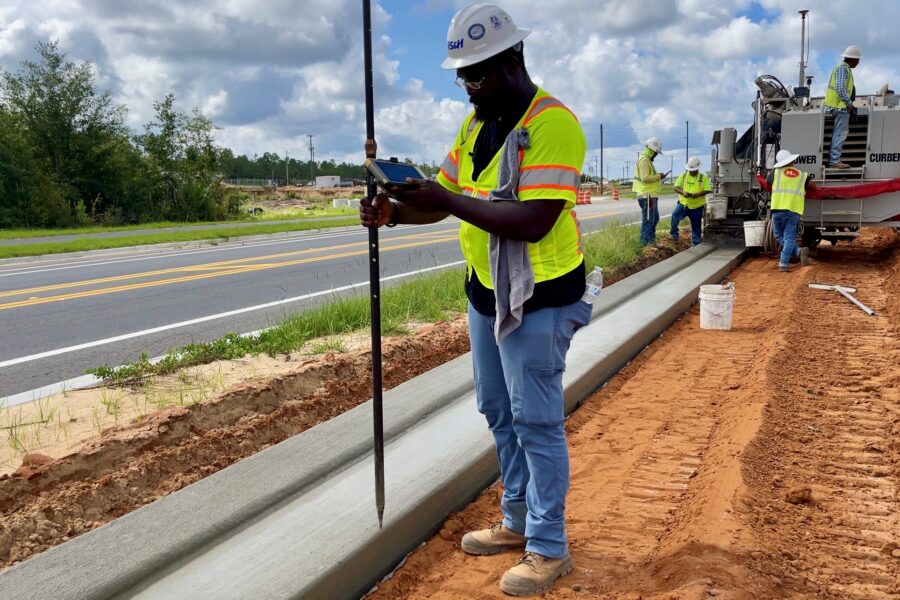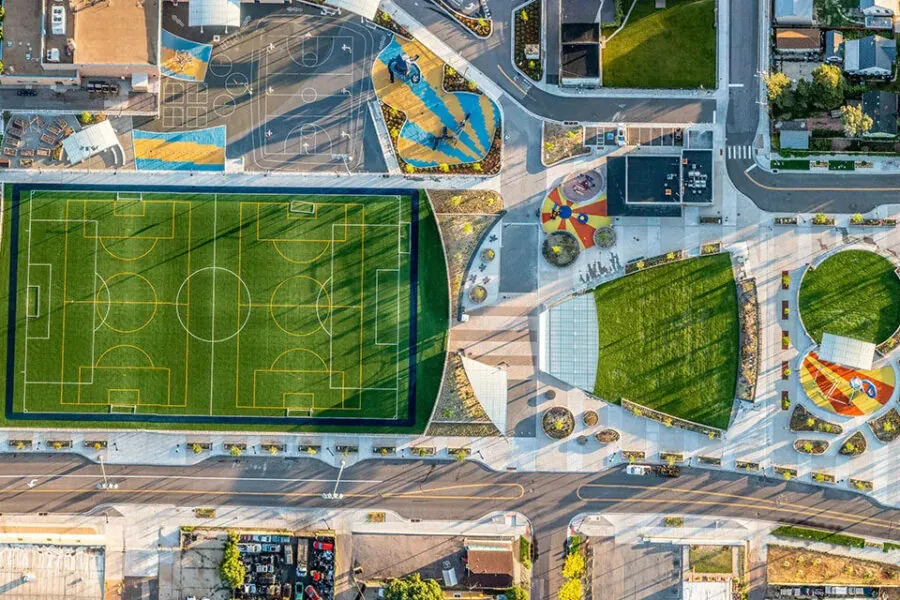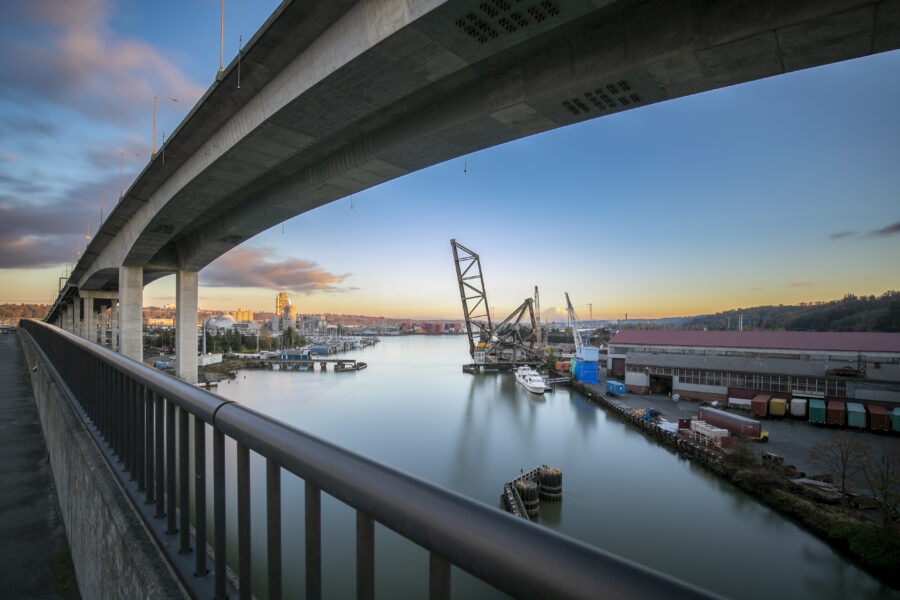Complete Streets: 3 Critical Components for Success

Is the transportation industry finally coming to terms with the fact that we can’t build ourselves out of congestion? Is induced demand curtailing expansion projects? Or has society’s movement towards alternate modes of transportation and healthy lifestyles pushed transportation departments to look beyond designing primarily for vehicles? Whatever the reason, the growth of complete streets policies has been exponential as DOTs and other agencies seek more innovative solutions for moving people and connecting communities. According to the National Coalition for Complete Streets, over 1,600 complete streets policies have been passed in the United States to date.
Complete streets support the growing focus on healthy communities and active lifestyles, advocates for increased convenience for seniors and has been proven to spur economic growth and development within communities. There is also an increasing demand for integrated modal facilities and complete streets elements answer that demand. Incorporating complete streets concepts into the earliest stages of planning for a project provides viable, safe and accessible modal components.
As policies continue to gain recognition and popularity, there are a few critical components for integrating complete streets concepts. We’ll explore three components below.
1. Ensuring a policy is in place
If the transportation agency responsible for a new road facility has not adopted a complete streets policy, implementing or adopting such concepts can often be extremely difficult.
One example is dockless scooters, which allow travelers to simply scan a code, their driver’s license, and a credit card to unlock the vehicle, use it to travel to their destination, and then leave it for the next rider. While dockless scooters are becoming trendy in urban areas, another trend is also emerging: scooter injury lawyers. Why? Not all cities have been planned for scooters zipping around pedestrians on tight sidewalks. Nor is it safe for scooters to be tailing cars. Because facilities weren’t planned for this, injuries and crashes have increased, causing a great transportation choice to be banned from cities.
Streets planned with complete streets policies can help to avoid this issue. These policies focus on mobility, providing connectivity and accessibility for all modes of movement. Complete streets policies have been widely adopted by local, regional and state jurisdictions. In 2015 the Fixing America’s Surface Transportation Act (The FAST Act) was the first federal transportation bill to include complete streets.
2. Including context sensitive design
The Institute of Transportation Engineers notes context sensitive design (CSD) as being “the result of developing transportation projects that serve all users and are compatible with the surroundings through which they pass—the community and environment.” With that, context sensitive design goes hand-in-hand with complete streets and must be considered when planning such a project.
Successful context sensitive design in complete streets projects is the result of extensive planning and collaboration at the very start of a project. Planners and designers must consider the demand of the facility in which they are working. A suburban area with four lanes and high-speed traffic doesn’t have the same user demands as a dense, urban corridor.
RS&H takes a holistic approach to project development that relies heavily on community and stakeholder involvement to ensure we address and balance the demands of the users with the goals of the project. The public, stakeholders, property owners, chambers of commerce, as well as other economic development agencies are all asked to share their thoughts and needs so there can be a coordinated effort from the start to move forward with a project.
Creative methods for public involvement are often the most successful. When the community doesn’t have time to come to us at a public meeting, we must go to them. Setting up tables at Little League baseball fields and community festivals, or using digital tools such as email surveys, geofencing, and social media have all proved effective at gathering feedback from the public.
Through several virtual meetings, public participation tripled during the SW 10th Street Connector PD&E Study. Our team successfully worked to utilize the support they were receiving from the public through social media, neighborhood yard signs and interactive virtual meeting spaces.
As transportation agencies have evolved from focusing foremost on how to move vehicles to focusing on the needs of the community, context sensitive design has become a crucial part to ensuring the facility supports movement, connectivity and economic growth.
The industry is evolving with the consideration of multiple modes of travel in an integrated design. DOTs are considering more and more innovative approaches to improve uncomfortable pedestrian experiences, including road diets and narrowing lanes to widen sidewalks.
3. Moving everyone – and everything – safely
Designing a facility that is safe for all users, regardless of their mode of transportation, should be inherent within complete streets projects.
Have you ever noticed a pedestrian crosswalk with no sidewalks connecting pedestrians to the intersection? Or perhaps tried to take a bike ride that was all too stressful? Complete streets projects must address such issues, always within the context of the facility. Safety for all users cannot be achieved without first considering each user’s needs and then implementing design elements that meet those users’ expectations and abilities. These elements may include implementing traffic calming to control speeds, connecting sidewalk networks, or addressing transit connectivity.
Visibility for pedestrians is key, as is crosswalk safety with features like extended sidewalks and median refuge islands. Bicyclists also need to feel safe, which can be achieved by widening bike lanes or creating a barrier from traffic. Transit connections with bicycle and pedestrian facilities must be included.
However, motorists are the largest element of the traveling public, and they also have safety needs to be addressed. Cars need to move efficiently, coordinated with and not compete against other travel modes. Traffic signals and timing, and other operational elements are crucial in maintaining the flow of traffic.
Additionally, the inclusion of access management techniques can be a valuable tool. Incorporating access management elements, such as the inclusion of medians, shared parcel access and turning movement controls improve the functionality of the roadway without adding capacity. These techniques lend themselves to the incorporation of bicycle and pedestrian facilities that are appropriately designed for the context of the facility and provide the balance for different travel modes.
Studies have shown time and again that effectively planned roadways – for all users – increase economic viability and property values within communities. The Federal Highway Administration (FHWA) emphasizes how planning well-conceived access and roadways not only helps maintain property values, but also helps the FHWA, DOTs, and other transportation agencies meet the goal of promoting safe and efficient transportation for all the public.
RS&H can help you find the best solutions for improving mobility, fostering economic growth, and enhancing your community. Visit our transportation page for more information.
This article was originally published on October 3, 2019, and updated on November 10, 2022.




